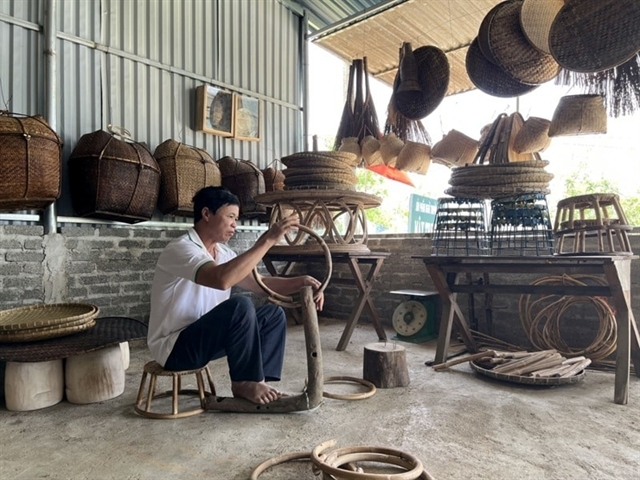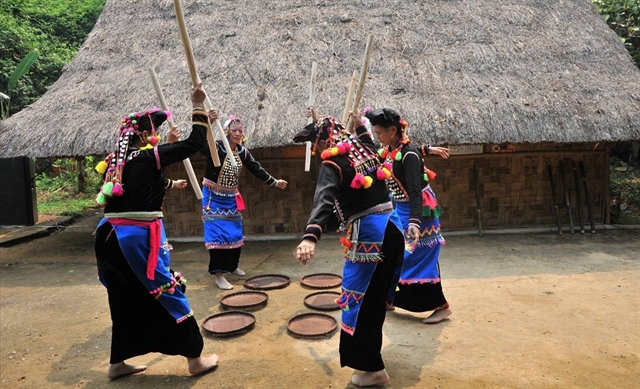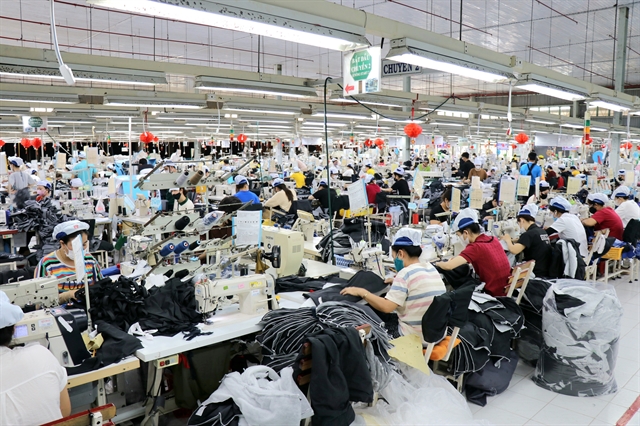 Life & Style
Life & Style

ĐIỆN BIÊN The traditional craft knowledge of bamboo and rattan weaving by the Thái ethnic group in Điện Biên Province has been officially recognised as a National Intangible Cultural Heritage of Việt Nam, joining a growing list of ethnic traditions celebrated for their cultural significance.

|
| A Thai man crafts a household product from rattan. The craft has recently been recognised as part of Việt Nam’s National Intangible Cultural Heritage.. Photo courtesy of Điện Biên Province’s Department of Culture, Sports and Tourism |
The recognition, granted by the Ministry of Culture, Sports and Tourism in June, was marked last week by a certificate presentation ceremony in Nà Tấu Commune, where provincial leaders honoured 31 localities that continue to preserve and practise this time-honoured craft.
Bamboo and rattan weaving is an age-old practice among the Thái people, producing a wide range of items such as ritual objects, household goods and tools for farming and production.
Depending on the intended use, artisans apply different techniques, including single-layer, double-layer and triple-layer weaving. The craft demands skill, patience, creativity and a refined aesthetic sense, along with years of experience and specialised knowledge. Each handmade piece reflects not only craftsmanship but also the cultural identity and values of the community.
In Nà Tấu Commune, the availability of local raw materials has supported the formation of a wickerwork cooperative involving 24 households. With decades of experience, these families produce woven goods for sale, serving both local residents and neighbouring areas.
The heritage listing is more than a symbolic honour — it provides a foundation for continued efforts by the authorities to safeguard and promote ethnic cultural traditions. It also encourages community involvement in preserving and passing down local heritage.

|
| Si La ethnic women present a dance at the New Rice Celebration, re-enacting daily activities such as pounding and sifting rice — a graceful tribute to traditional life and labour. Photo baodantoc.vn |
Alongside the Thái weaving tradition, the New Rice Celebration of the Si La ethnic group in Mường Nhé Commune has also been recognised as a National Intangible Cultural Heritage.
This annual ceremony plays a vital role in the spiritual and material life of the Si La people. It expresses gratitude to ancestors for peace and prosperity while praying for favourable weather and abundant harvests in the season ahead.
The Si La community continues to uphold this tradition, passing it on to younger generations as a way to honour their roots and reinforce cultural pride. The celebration also serves as a means of moral education and strengthens the historical and cultural identity of villages across the region.
At present, Điện Biên Province has 22 intangible cultural heritages recognised at the national level. Among them, two have received international recognition from UNESCO as Representative Intangible Cultural Heritage of Humanity: the then ritual practice of the Tày, Nùng and Thái ethnic groups, and the xòe dance art of the Thái people.
These heritages reflect the province’s rich cultural diversity and deep reservoir of traditional knowledge. Their recognition not only helps preserve unique ethnic customs but also contributes to the development of cultural tourism in the region. VNS




